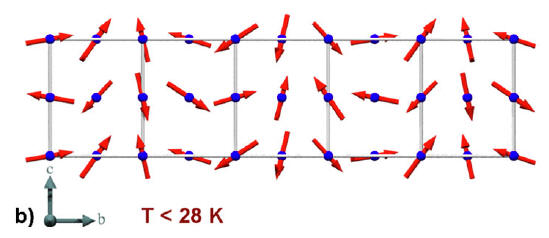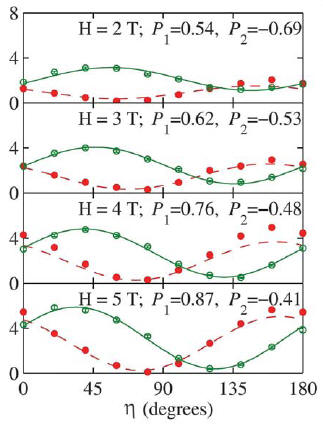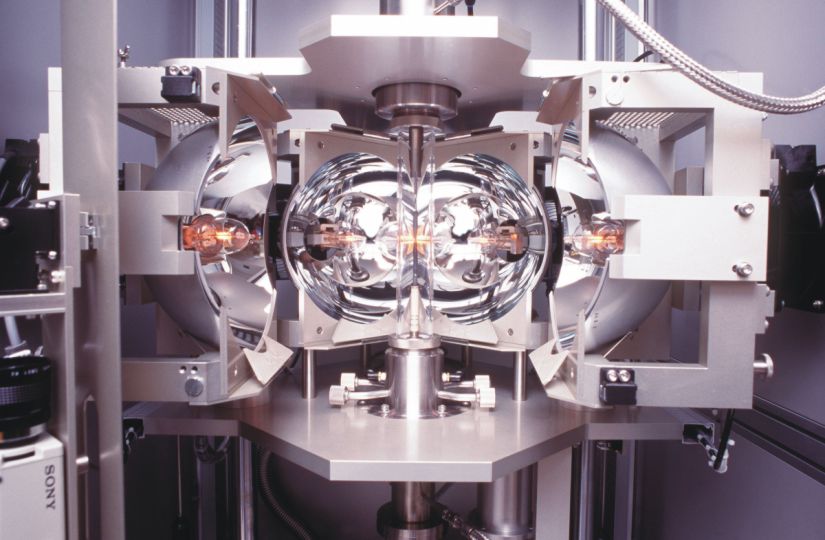
Multiferroics
Multiferroics are materials which possess both magnetic order and a ferroelectric polarization.
Magnetoelectric multiferroics have the property that the magnetic and dielectric order parameters are coupled, so that the ferroelectricity can be controlled by magnetism and vice versa. magnetoelectric multiferroics have potential application in data storage, sensors and actuators. The key scientific challenges are: (i) understanding the mechanism that causes magnetoelectric coupling, and (ii) finding materials with strong magnetoelectric coupling that can operate at room temperature.
Current projects
This project has been led by Dr Sunil Nair, a European Community Marie Curie Fellow.
This project is undertaken in collaboration with Prof Des McMorrow (UCL) and scientists at the European Synchrotron Radiation Facility (ESRF) in Grenoble, France, the Diamond Light Source (DLS), and the Swiss neutron scattering facility SINQ at the Paul Scherrer Institut.
Prof. Andrew Boothroyd
Clarendon Laboratory
Oxford, OX1 3PU
United Kingdom
phone
+44 (0) 1865 272376
fax
+44 (0) 1865 272400
Synthesis and properties of multiferroics
Several new multiferroic materials have been synthesized. A recent highlight is the discovery of a new multiferroic Cu3Nb2O8,
which becomes ferroelectrically polar at T = 24 K simultaneous with the appearance of a generalized helicoidal magnetic structure. The results are reported in
Cu3Nb2O8: A multiferroic with chiral coupling to the crystal structure
R. D. Johnson, S. Nair, L. C. Chapon, A. Bombardi, C. Vecchini, D. Prabhakaran, A. T. Boothroyd and P. G. Radaelli
Phys. Rev. Lett. 107 (2011) 137205.
Electric field control of chiral magnetic domains in the high-temperature multiferroic CuO
P. Babkevich, A. Poole, R. D. Johnson, B. Roessli, D. Prabhakaran, and A.T. Boothroyd
Phys. Rev. B 85 (2012) 134428.
Synchrotron X-ray studies
Use of resonant magnetic X-ray scattering techniques has made it possible to determine complex magnetic structures involving several different magnetic species, such as in TbMnO3, and to observe magnetic moments on the oxygen sites, e.g. in TbMn2O5. Techniques have been developed to observe electric switching of chiral magnetic structures with circularly polarized light, and to detect femtoscale lattice distortions induced by a magnetic field through the magnetoelectric effect.
For more details of this work see:
Nature of the magnetic order and origin of induced ferroelectricity in TbMnO3
S. B Wilkins, T. R. Forrest, T. A. W. Beale, S. R. Bland, H. C. Walker, D. Mannix, F. Yakhou, D. Prabhakaran, A. T. Boothroyd, J. P. Hill, P. D. Hatton, and D. F. McMorrow
Phys. Rev. Lett. 103 (2009) 207602.
Antiferromagnetically spin polarized oxygen observed in magnetoelectric TbMn2O5
T. A. W. Beale, S. B. Wilkins, R. D. Johnson, S. R. Bland, Y. Joly, T. R. Forrest, D. F. McMorrow, F. Yakhou, D. Prabhakaran, A. T. Boothroyd, and P. D. Hatton
Phys. Rev. Lett. 105 (2010) 087203.
Circularly Polarized X rays as a Probe of Noncollinear Magnetic Order in Multiferroic TbMnO3
F. Fabrizi, H.C. Walker, L. Paolasini, F. de Bergevin, A.T. Boothroyd, D. Prabhakaran, and D.F. McMorrow
Phys. Rev. Lett 102 (2009) 237205.
Femtoscale magnetically induced lattice distortions in TbMnO3
H.C. Walker, F. Fabrizi, L. Paolasini, F. de Bergevin, J. Herrero-Martin, A.T. Boothroyd, D. Prabhakaran, and D.F. McMorrow
Science 333 (2011) 1273.
Facilities and Equipment in the Group
The group has access to a range of state-of-the art equipment for sample preparation, characterisation and fundamental measurements.


Magnetic structure of Cu3Nb2O8

Magnetic order in TbMnO3
Non-resonant, charge–magnetic
Image furnace for crystal growth
interference scattering from TbMnO3

by the floating-zone method